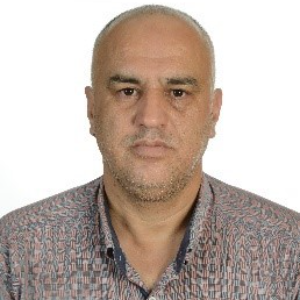Title : Modeling of water flooding effects during enhanced oil recovery
Abstract:
Water flooding secondary oil recovery method was adapted to enhance oil production from the Algerian X-field by maintaining reservoir pressure and replacing the recovered oil quantities. However, this operation has some negative effects on the reservoir rock and the production facilities. Indeed, several salts, including halite, anhydrite, calcite, barite, and celestine, are deposited in the rock reservoir, on the downhole completion equipment, along the tubing, and in the surface equipment such as wellheads, separators, and pipelines. On the other hand, the end of the diagenetic sequence for the reservoir sandstone marked by the bearing of the late anhydrite cement and iron cements such as pyrite and goethite. To understand the formation of these late diagenetic cements and salts observed after water injection, and the factors involved, a geochemical simulation of the individual/combined effects of Cambrian oil brine and Albian injection water was carried out. The PHREEQC software has been used with two different thermodynamic databases Pitzer.dat and llnl.dat. The Pitzer database is suitable for highly concentrated waters (brines) and tested for high pressure and temperature brines. The llnl.dat database is dedicated for high pressure and high temperature. It gave also good results, especially for speciation determination. Thus, the combination and comparison of these two databases performed to discuss the modelled results. The results obtained by the PHREEQC simulation perfectly reproduced the observations made. Indeed, the origin of the late diagenetic iron cement crystallized because of the supersaturation of the oil brine in pyrite, hematite and goethite during its installation in the Cambrian HMD trap after the oil secondary migration. In addition, interactions between sulphate-rich Albian water and Cambrian oil brine containing barium, calcium and strontium explain the precipitation of anhydrite, calcite, barite and celestine. The high concentration of sodium and chlorine in the oil brine, and the high temperature along the hydrocarbon production pathway explain the precipitation of halite throughout. This study shows that it is advantageous to simulate the water flooding operation with the starting water flooding and reservoir brine ionic compositions to predict the possible salts that will precipitate. Thus, many undesired solids can be avoided by selecting the most compatible waters and specific inhibitors for salts likely to crystallize.
Audience Take-Away:
- From the presentation, industrialists operating in the oil and gas field will understand the importance of chemical interactions between injection fluids and reservoir effluents.
- The simulation presented is only the beginning to perfect the model of the effects caused by the exercise of secondary recovery with the injection of water.
- Certain minerals are not yet supported by known thermodynamic databases, a research work is fully opening up for academicians.




